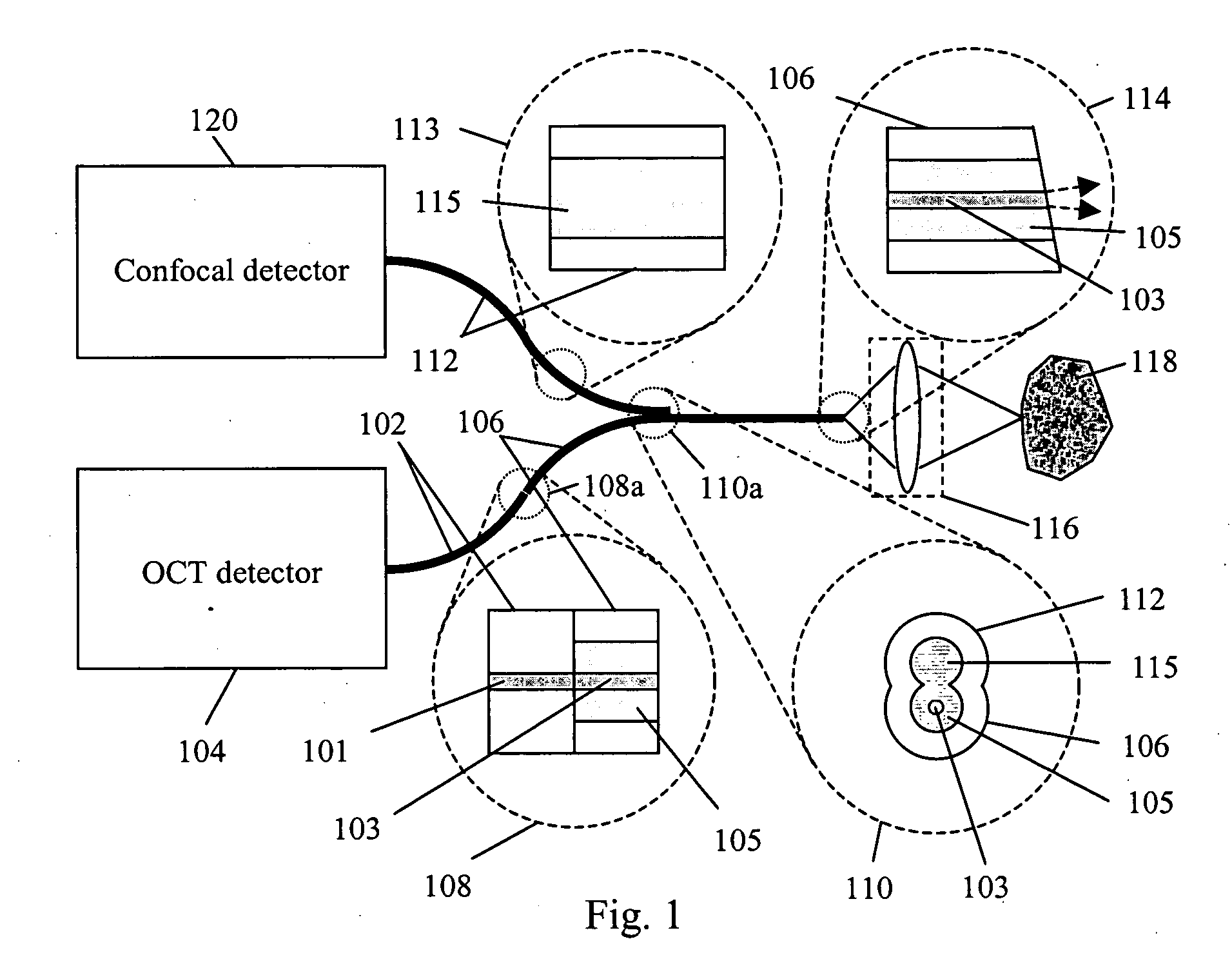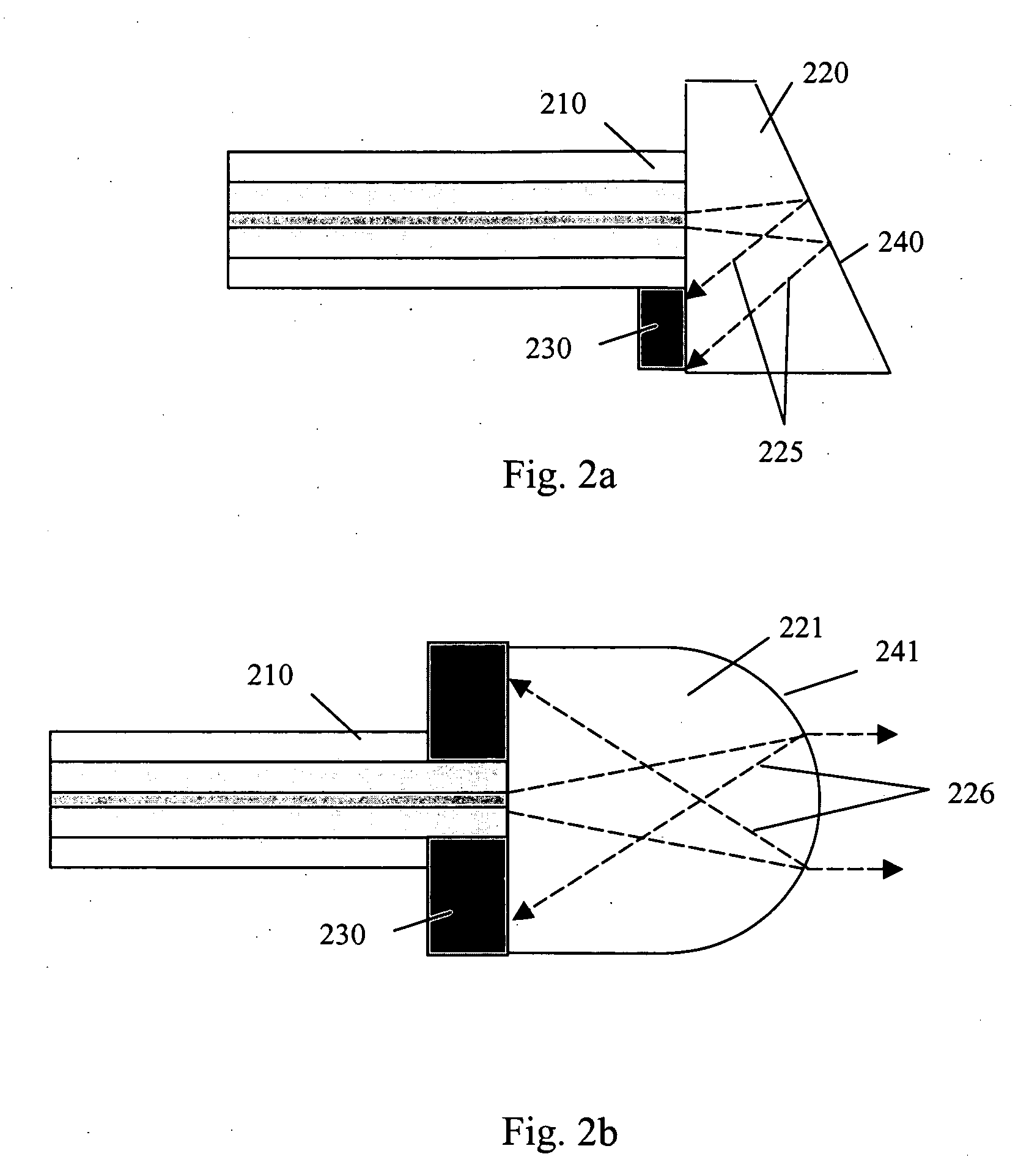Apparatus and method for combined optical-coherence-tomographic and confocal detection
a technology of optical coherence tomography and confocal detection, applied in the field of optical imaging and diagnostic devices, can solve the problems of cslo sample signal being overwhelmed by fiber end reflection, sequential, rather than simultaneous, oct and cslo acquisition, etc., and achieves the effect of effective separation, high quality and optimized cslo signal to noise ratio
- Summary
- Abstract
- Description
- Claims
- Application Information
AI Technical Summary
Benefits of technology
Problems solved by technology
Method used
Image
Examples
Embodiment Construction
[0028] The present invention discloses an apparatus and a method for coupling source light through a single mode fiber to a sample, collecting and separating spatially coherent light for an interferometric measurement, and collecting and separating spatially incoherent light for imaging. The interferometric measurement produces an OCT image, and the spatially incoherent light is used to form a CSLO image. The two images can be obtained independently, sequentially or simultaneously, with high quality, using a dual-waveguiding module consisting of a dual-waveguiding optical structure that may be combined with a multi-mode optical power extractor. Although a dual-waveguiding structure has been used for spectrally encoded scanning laser imaging [Yelin, D. et al. (2004). “Double-clad fiber for endoscopy.”Optics Letters 29(20): 2408-2410], such a structure has not been combined with OCT to simultaneously produce both an OCT image and a confocal image. In a preferred embodiment, a concentr...
PUM
 Login to View More
Login to View More Abstract
Description
Claims
Application Information
 Login to View More
Login to View More - R&D
- Intellectual Property
- Life Sciences
- Materials
- Tech Scout
- Unparalleled Data Quality
- Higher Quality Content
- 60% Fewer Hallucinations
Browse by: Latest US Patents, China's latest patents, Technical Efficacy Thesaurus, Application Domain, Technology Topic, Popular Technical Reports.
© 2025 PatSnap. All rights reserved.Legal|Privacy policy|Modern Slavery Act Transparency Statement|Sitemap|About US| Contact US: help@patsnap.com



